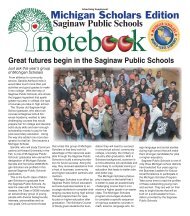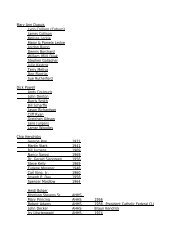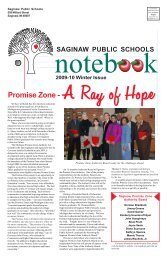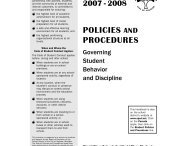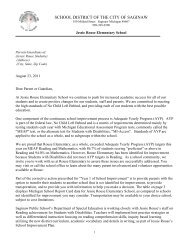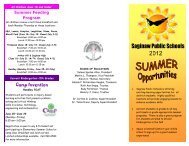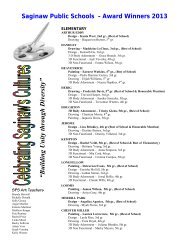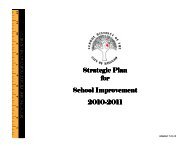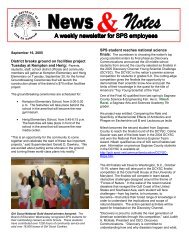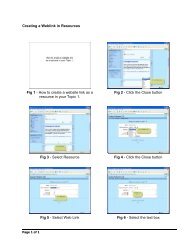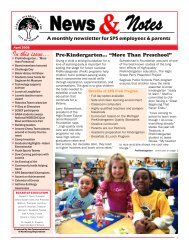SOCIAL STUDIES GRADE 5 PACING GUIDE Essential Questions: 1 ...
SOCIAL STUDIES GRADE 5 PACING GUIDE Essential Questions: 1 ...
SOCIAL STUDIES GRADE 5 PACING GUIDE Essential Questions: 1 ...
You also want an ePaper? Increase the reach of your titles
YUMPU automatically turns print PDFs into web optimized ePapers that Google loves.
<strong>SOCIAL</strong> <strong>STUDIES</strong> <strong>GRADE</strong> 5 <strong>PACING</strong> <strong>GUIDE</strong><br />
G1 The World in Spatial Terms: Geographical Habits of Mind<br />
Describe the relationships between people, places, and environments by using information that is in a geographic (spatial) context. Engage in mapping<br />
and analyzing the information to explain the patterns and relationships they reveal both between and among people, their cultures, and the natural<br />
environment. Identify and access information, evaluate it using criteria based on concepts and themes, and use geography in problem solving and<br />
decision-making. Explain and use key conceptual devices (places and regions, spatial patterns and processes) that geographers use to organize<br />
information and inform their study of the world.<br />
G1.1 Spatial Thinking<br />
Use maps and other geographic tools to acquire and process information from a spatial perspective.<br />
Geographers use published maps, sketch (mental) maps, and other geographic representations, tools, and technologies to acquire, organize,<br />
process, and report information from a spatial perspective. World maps made for specific purposes (population distribution, climate patterns,<br />
vegetation patterns) are used to explain the importance of maps in presenting information that can be compared, contrasted, and examined to<br />
answer the questions “Where is something located?” and “Why is it located there?” Students will begin with global scale and then refocus the<br />
scale to study the region of the Western Hemisphere, and, finally, focus on a specific place.<br />
G1.2 Geographical Inquiry and Analysis<br />
Use geographic inquiry and analysis to answer important questions about relationships between people, cultures, their environment, and relations<br />
within the larger world context.<br />
Geographers use information and skills to reach conclusions about significant questions regarding the relationships between people, their cultures,<br />
the environments in which they live, and the relationships within the larger world context. Students will reach their own conclusions using this<br />
information and make a reasoned judgment about the most justifiable conclusion based on the authenticity of the information, their skill at<br />
critically analyzing the information, and presenting the results of the inquiry.<br />
G1.3 Geographical Understanding<br />
Use geographic themes, knowledge about processes and concepts to study the Earth.<br />
The nature and uses of geography as a discipline and the spatial perspective require that students observe, interpret, assess, and apply geographic<br />
information and skills. The uses of the subject and content of geography are essential in the development of geographical understanding. A spatial<br />
perspective enables student to observe, describe, and analyze the organizations of people, places, and environments at different scales and is<br />
central to geographic literacy.<br />
08-09 5<br />
Social Studies 5 th Grade Pacing Guide



